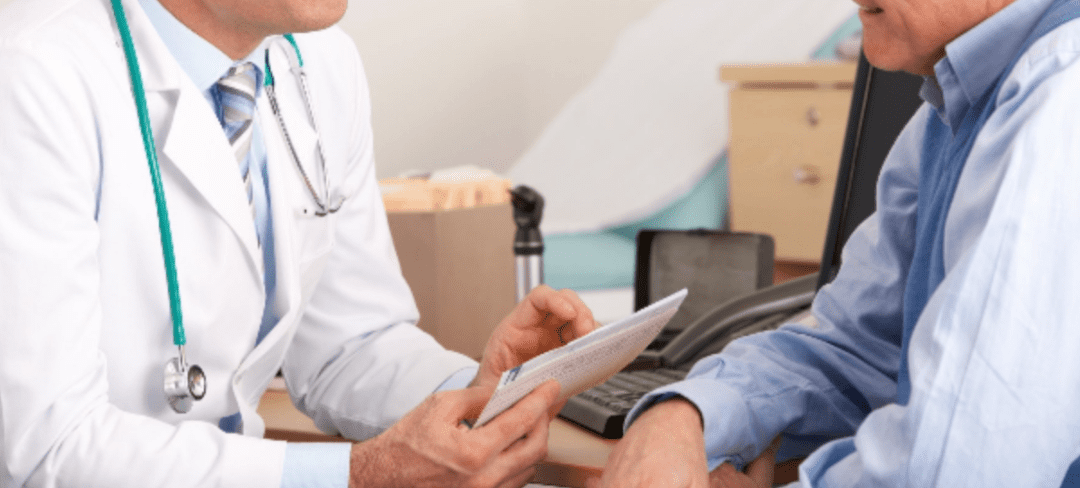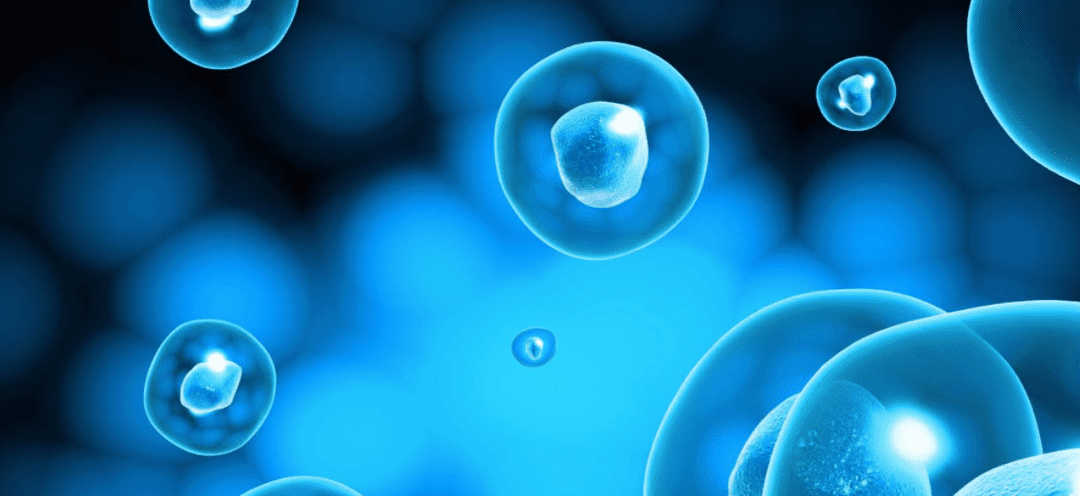
by admin | Jul 15, 2022 | Osteoarthritis, Extracellular Vesicles, Mesenchymal Stem Cells, Stem Cell Research, Stem Cell Therapy
Osteoarthritis (OA) is the most common form of arthritis, affecting over 525 million people around the world. Characterized by pain, swelling, and stiffness resulting from the degradation of cartilage that provides cushion and protection between our bones, OA is an inflammatory condition without a clear and effective treatment.
OA most commonly affects the hands, knees, hips, and spine, but ultimately can cause damage to any joint in the body. Currently, most treatments for OA are designed to minimize the symptoms of the condition, not to treat or prevent the condition itself.
In recent years, pre-clinical studies of mesenchymal stem cells (MSCs) have demonstrated to be successful in resurfacing areas of degenerated cartilage and early-phase clinical trials found that intra-articular (IA) administration of MSCs leads to a reduction in pain and improved cartilage protection and healing.
In this review, Mancuso et al. provide an overview of the functions and mechanisms of MSC-secreted molecules found in in-vitro and in-vivo models of OA. Although MSCs disappear from the target area soon after administration, they have been found to demonstrate a rich secretory profile that is enhanced by exposure to inflammatory signals and is still able to deliver immunomodulatory effects.
Mancuso et al. highlight that, although chondrocyte apoptosis has long been associated with OA and despite the fact that there is no conclusive report identifying anti-apoptosis effects associated with MSCs, indirect evidence suggests that they have inhibited of ex-vitro cultured OA chondrocytes. Considering this, the authors recommend future studies of joint-associated MSC anti-apoptotic effects as a way to identify direct mediators of the process.
According to the authors of this review, the role of inflammation in the establishment and maintenance of OA is now widely accepted with synovial membrane inflammation a hallmark of OA pathology. Additionally, the biological markers of inflammation positively correlate with knee pain and clinical progression of OA. Studies have demonstrated that licensed MSCs secrete an array of anti-inflammatory cytokines which can help re-establish an equilibrium in the inflamed synovium and reduce inflammation in joints affected by OA.
After being administered, MSCs tend to undergo biological changes more radical than differentiation or licensing, with most completely disappearing 10 days post-injection. However, even after this occurs, there have been significant therapeutic effects observed.
Researchers have found that these apoptotic MSCs communicate with immune cells both directly and indirectly with patient responsiveness to MSCs correlating with their cytotoxic capacity. Mancuso et al. conclude that these findings provide evidence that apoptosis is one of the driving mechanisms of MSC-mediated immunosuppression.
Findings also suggest that the paracrine action of MSCs is not limited to soluble factors and has been shown to produce extracellular vesicles (ECVs). In pre-clinical models, ECVs have been observed to have anti-apoptotic, anti-fibrotic, pro-angiogenic, and anti-inflammatory effects. In addition, these ECVs – when derived from MSCs – inhibit the proliferation of lymphocytes, macrophages, and B cells.
MSC-derived ECVs have shown to be promising in rat models of osteoporosis and have recently been tested in OA animal models with promising results. The authors point out that while further study is required, the initial findings indicate that the use of MSC-ECVs in therapy designed for OA would bring many advantages when compared to cell-derived products. The authors also point out that several issues with ECVs still have to be considered, including the need for them to be specifically tailored for the specific indication being treated.
Mancuso et al. conclude that MSCS has already proved to be a valuable tool for many conditions and there is significant potential for their use in OA. Phase I clinical trials have established that the direct IA administration of MSCs in OA patients is safe and pain reduction and increased cartilage thickness have been observed after injection. However, they also call for additional studies to examine the role of cell death in mediating the therapeutic effects of MSCs.
Source: Mesenchymal Stem Cell Therapy for Osteoarthritis: The Critical Role ….” 11 Jan. 2019, https://www.frontiersin.org/articles/10.3389/fbioe.2019.00009/full.

by Stemedix | Dec 27, 2021 | Osteoarthritis, Stem Cell Therapy
Osteoarthritis (OA) affects over 32.5 million adults in the U.S. It is the most common type of arthritis and is also known as degenerative joint disease. Symptoms can be mild to completely debilitating pain in some people. Here we discuss is stem cell therapy effective for osteoarthritis?
Fortunately, most patients can manage their OA symptoms with lifestyle changes. But for those who experience severe pain, lifestyle changes aren’t always enough. Stem cell therapy is a safe, non-invasive treatment that may bring long-lasting relief for individuals with OA.
Causes and Risk Factors for OA
In most cases, osteoarthritis is caused by normal wear and tear on the joints. As the protective cartilage inside a joint begins to wear down, it creates changes in the underlying bone. The result can be inflammation, pain, stiffness in the joints, and a decreased range of motion.
Age is the number-one risk factor for developing OA. As we age, everyday movements cause the cartilage to break down. Other risk factors include the following:
- Genetics: If people in your family have OA, you are more likely to develop the condition
- Obesity: Extra weight increases the stress on weight-bearing joints
- Joint injury: A joint that has been damaged is more likely to develop OA
- Repetitive use: Repetitive bending, kneeling, or other movements can cause the cartilage to break down sooner
- Gender: Women, and especially women over 50, are at the highest risk for developing OA
Many people ask the question – Is Stem Cell Therapy Effective for Osteoarthritis? Traditional treatments for OA typically involve a combination of therapies such as physical therapy, weight loss, medications, and using supportive devices like a cane. In severe cases, surgery may be recommended.
How Does Regenerative Medicine Help Osteoarthritis?
Whether you have been newly diagnosed with OA or have been coping with the condition for many years, regenerative medicine, also known as stem cell therapy, is considered to be a safe treatment for most patients with OA and other orthopedic complaints such as degenerative disc disease.
The most common side effects of receiving stem cell therapy are temporary swelling and mild pain at the injection site. The inflammation that occurs when joint cartilage becomes damaged is one cause of OA pain. Swollen tissues cause pressure on the delicate nerves that surround the joints. The other source of pain is from the joints themselves. Without the protection of cartilage, joint bones come into direct contact with one another.
Stem cells release anti-inflammatory agents that reduce the pain caused by swelling and promote healing within the joint. Stem cell therapy may also be able to regenerate healthy new cartilage tissue. Each case of OA is considered and set with realistic expectations and stem cell therapy offers patients an alternative option to manage their condition and symptoms. If you would like to learn more or schedule an a consultation, contact a care coordinator today!

by Stemedix | Nov 22, 2021 | Stem Cell Therapy, Osteoarthritis
The hip joint is one of the largest in the human body. It can bear up to five times a person’s body weight and allows us to stand, walk, run and enjoy an active life. Changes in the hip’s function can be life-changing, making it difficult to perform normal activities. Osteoarthritis in the hip can be extremely painful and threaten a person’s mobility. The inflammation caused by osteoarthritis in the hip joint can cause pain to spread to the low back, pelvic area, and legs. Not only does it make standing and walking uncomfortable, but hip pain can also make it uncomfortable to sit for more than a few minutes at a time. Here we will talk about Stem Cell Therapy for hips.
How Does Stem Cell Therapy Help Hip Arthritis Pain?
Surgery is often considered to be the best solution for hip pain, but it comes with many downsides. The risks involved with a surgical procedure, including long recovery times, can leave some patients looking for a different solution.
Stem cell therapy offers a solution that has the potential to provide pain and symptom management with fewer and more minor risks. Downtime and recovery are minimal.
Stem cells are considered to be the body’s raw materials. They are the cells from which everything in the human body is made—including other cells. Stem cell therapy is the practice of introducing stem cells into areas of injury for possible tissue regeneration and pain management focus for many conditions.
Stem cell therapy can often also be used in conjunction with platelet-rich plasma (PRP) to treat osteoarthritis.
Stem cell therapy may be helpful if the following apply to you:
- Regular physical activities are painful
- You have trouble walking or standing for an extended time
- Managing stairs has become difficult
- Your sleep is disturbed due to hip pain
- It is hard to get up from a chair
Stem cell therapy offers a potential therapy to decrease or eliminate the cause of osteoarthritis in the hip so that you can return to daily activities without pain.
How Does Stem Cell Therapy Work?
Osteoarthritis is most commonly caused by wear and tear of the body’s joints. All bones have cartilage at their ends to provide a protective cushion as the bones move to perform everyday functions. With time and use, the cartilage can wear away, leaving joints unprotected. The pressure caused by bone-on-bone interaction causes inflammation that can lead to osteoarthritis pain.
Stem cell therapy has the ability to encourage new cartilage to grow. The renewal of healthy levels of cushioning makes it possible to move the hip joints without pain.
Is Stem Cell Therapy Right for You?
If you’re suffering from pain related to hip osteoarthritis and have tried other therapies without success, stem cell therapy for hips may help. Patients can explore this option to see if they are a candidate with no obligation. Contact a Care Coordinator today to learn more.

by admin | Oct 1, 2021 | Stem Cell Therapy, Osteoarthritis, PRP, Stem Cell Research
With nearly 30 million people in the US affected by osteoarthritis (OA), the condition continues to be among the leading causes of chronic pain and disability. Considering that advances in medical technology have increased overall life expectancy, the number of people living longer and dealing with the effects of OA is expected to increase for the foreseeable future.
Although modern medicine has improved the way most diseases and chronic conditions are diagnosed and treated, OA treatment has not benefited from these advances. As a result, treatment and prevention of OA continue to focus primarily on controlling and minimizing symptoms associated with the condition, not treating or preventing the condition itself. Unfortunately, for many, when symptoms of OA progress to a point where the pain is no longer able to be managed, their options look to surgical replacement of the affected joint.
While there are many contributing factors related to the onset and progression of OA, including obesity, history of trauma, genetics, and heritable and acquired disorders, there also appears to be an association between the onset of OA and a depleted local population of mesenchymal stem cells (MSCs).
Considering the apparent relationship between OA and MSCs, Freitag et al. reviewed the reparative pathways, safety, and efficacy of MSC therapy in the treatment of osteoarthritis.
With their ease of harvest and ability to expand into chondrocytes, MSCs have continued to gain interest when exploring various stem cell therapies for the active management of pain and symptoms associated with OA.
Freitag et al. found that preclinical and clinical results of studies of cartilage repair techniques that utilize MSCs, including MSC scaffold transplantation techniques, MSC injectable techniques, MSC as a vehicle for platelet-rich plasma (PRP), and hyaluronic acid (HA) as an active carrier of MSCs, have all shown favorable results in supporting the benefits of MSC for the improvement of function and regeneration of new tissue in those afflicted with OA.
With over 400 active trials currently examining the efficacy of MSCs in the treatment of a variety of conditions, including OA, the safety of utilizing MSC therapy continues to draw interest from the medical community.
Although some early studies appeared to raise the question of abnormal cell growth, and ultimately the safety, associated with MSC therapy, the authors’ systematic review of clinical trials found that, while caution needs to be undertaken when culturing MSCs, the evidence demonstrates MSCs are generally safe for therapeutic use for the treatment of OA.
Freitag et al. conclude that the rapid progression of OA and related conditions demonstrate the need for therapies that repair and prevent these diseases, not just manage pain and related symptoms. As such, the authors feel MSC therapy offers a safe and viable option for the eventual treatment and prevention of OA and calls for further randomized controlled trials to evaluate the most effective applications of MSCs for managing osteoarthritis.
Source: (2016, May 26). Mesenchymal stem cell therapy in the treatment of osteoarthritis. Retrieved from https://bmcmusculoskeletdisord.biomedcentral.com/articles/10.1186/s12891-016-1085-9

by Stemedix | Aug 30, 2021 | Osteoarthritis, Stem Cell Therapy
Before the advent of stem cell therapy, patients that were suffering from osteoarthritis were forced to rely on traditional treatment options. These treatments included oral medications, cortisone injections, and surgical intervention. Fortunately, stem cells have shown to be a promising and safe alternative treatment option. Stem cell therapy has the potential to help patients improve their quality of life, reduce pain, and potentially halt the progression of osteoarthritis. Below are the stem cell therapy benefits for Osteoarthritis. They are outlined so you can make an informed decision regarding the best options to manage your osteoarthritis.
What Are Stem Cells?
Stem cells are a unique type of cell that is often described as the body’s raw building blocks because they are used to form a variety of other specialized cells. Stem cells can be harvested in a laboratory setting and concentrated for various therapies. They can be used to treat neurodegenerative, autoimmune, and orthopedic ailments.
Two primary types of stem cells that are used more commonly today in medical therapies are known as adult autologous stem cells and umbilical cord-derived stem cells.
Autologous stem cells are derived from harvested adipose (fat) tissue or bone marrow aspirate. Umbilical cord-derived stem cells are retrieved from Wharton’s Jelly, which is a substance that lines the interior of umbilical cords.
How Can Stem Cells Improve Osteoarthritis Symptoms?
While stem cell therapy is still being refined and improved upon, it has shown positive results in clinical trials. In many of these studies, stem cells proved to be a potentially effective therapy for osteoarthritic conditions to offer patients additional options to consider in addition to several traditional options. Below are some improvements reported.
Reduce Pain and Inflammation
Although it is technically not a cure nor can be guaranteed, stem cell therapy has been shown to help relieve some of the most debilitating symptoms that osteoarthritis patients encounter like pain and inflammation.
Chronic pain and inflammation have the potential to diminish a person’s quality of life. These ailments can prevent a person from participating in activities they enjoy and reduce their mobility. Many patients have experienced drastic pain improvement after using stem cell therapy. Some of them saw improvements as soon as one month following their treatment. Post-treatment care is also important for patients to follow to help optimize their outcomes.
Improved Functionality
As pain and inflammation subside, functionality tends to improve. Stem cell therapy has helped a high percentage of patients to become more independent and resume normal activities. They were able to become less reliant on others and saw improvements in functionality when compared to other treatment options.
Halts Progression of Osteoarthritis
In some trials, stem cell therapy was able to halt the progression of osteoarthritis. While these results were not typical, it does bode well for patients that are struggling with severe osteoarthritic conditions.
If you are suffering from osteoarthritis or other orthopedic conditions, you may want to explore the stem cell therapy benefits for Osteoarthritis. This treatment option might help you improve your quality of life and achieve better outcomes in addition to your current standard of care options. If you would like to learn more about getting started contact us today!

by Stemedix | Jun 7, 2021 | Osteoarthritis, Stem Cell Therapy
Osteoarthritis (OA) is a condition in which the natural cushioning between joints breaks down eventually leading to bone-on-bone contact, pain, and loss of flexibility. OA affects roughly 30 million people in the U.S., many of whom are over the age of 60. As the U.S. population ages, the number of people with OA will likely increase. While the condition can affect any joint, it’s particularly common in the knees. In this article, we will talk about a very common question, can stem cells help Osteoarthritis?
Stem Cell Therapy for Osteoarthritis
While lifestyle modifications and certain medical interventions can help reduce symptoms of Osteoarthritis, once the condition progresses significantly, joint replacement surgery may be the only option for treatment.
Recently, researchers from Krembil Research Institute, University Health Network in Toronto published results for using stem cells to treat Osteoarthritis in the journal STEM CELLS Translational. Their goal was to determine whether mesenchymal stem cells, which can develop into specialized cells such as muscle, bone, and cartilage, could replace knee cartilage.
The researchers extracted stem cells from the bone marrow of 12 participants. They received one of three dosages in the knee and were then studied over the following year. Participants received routine MRI scans and had inflammatory biomarkers measured. They were also questioned about their symptoms. By the end of the 12 months, participants exhibited a considerable reduction in pain and an increase in quality of life.
All participants tolerated the doses well, with no serious adverse effects. Those who had the highest doses of stem cells experienced the best outcomes, including a significant reduction in inflammation. The anti-inflammatory effects of the stem cells are believed to be an important factor in the decreased pain levels.While the study was limited in scope, it does appear to be a stepping stone for further advancements into stem cell therapy. Moreover, this is not the first clinical research to look into the potential of stem cells for treating OA. A larger 2015 study showed that the treatment could be a feasible alternative to surgery for OA, while an even larger 2016 study showed similar outcomes. Should further studies show similar results, it’s a likely possibility that stem cell therapy could become an effective treatment for OA. If you are interested in learning more, contact a care coordinator today!







 St. Petersburg, Florida
St. Petersburg, Florida
